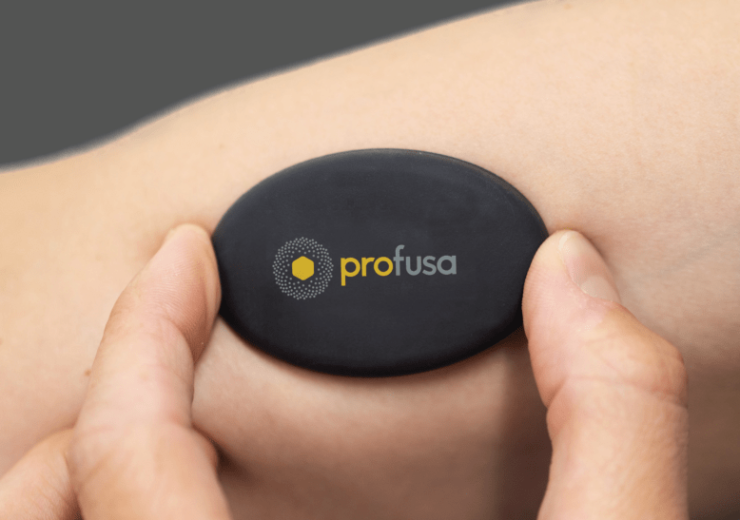New insights come as Profusa receives CE Mark for its latest generation device, the Wireless Lumee Oxygen Platform

Profusa Lumee Oxygen Platform could improve management of critical limb ischemia. (Credit: Profusa, Inc.)
Profusa, a digital health company that is pioneering the next generation of personalized medicine, today announced research findings that suggest the company’s Lumee Oxygen Platform may help improve the clinical management of patients with critical limb ischemia (CLI) who are undergoing endovascular revascularization treatment (EVT). The data, from a recent post-market clinical study called OMNIA (Oxygen Monitoring Near Ischemic Areas), were detailed in a series of presentations at the Leipzig Interventional Course (LINC) in Leipzig, Germany.
The Lumee Oxygen Platform is a tiny, injectable tissue-integrated biosensor with an intelligent data platform intended for continuous, real-time monitoring of tissue oxygen levels.
“Performing revascularization in patients with critical limb ischemia is standard practice, but the tools surgeons and interventionalists typically use to gauge effectiveness of the procedure are not ideal,” said Marianne Brodmann, M.D., interim head of the Clinical Division of Angiology, Department of Internal Medicine, at Medical University in Graz, Austria. “These research findings from OMNIA suggest that continuously measuring tissue oxygen may result in better outcomes for these patients.”
CLI is a serious form of peripheral artery disease (PAD), a condition that affects more than 200 million people worldwide and results in the narrowing of blood vessels and reduced blood flow to the lower limbs. Decreased tissue oxygen levels in the lower limbs of PAD patients can lead to disabled walking, or in more advanced cases, gangrene and amputation. CLI can result in severe pain in the feet or toes, even while resting.
OMNIA, a multicenter trial of the Lumee Oxygen Platform, monitored tissue oxygen levels in the affected limbs of 35 CLI patients who underwent EVT procedures, which are designed to clear obstructed arteries. Study participants were injected with four Lumee biosensors, three in the foot and one as a reference sensor in the arm. OMNIA collected measurements of oxygen throughout the revascularization process (with measurements performed before, during, and one, three, six, and twelve months post-procedure). OMNIA also recorded traditional hemodynamic metrics, including ankle-brachial index and toe-brachial index, and clinical assessments of wound healing at each follow-up visit.
The OMNIA data presented by Brodmann showed that increases in tissue oxygen during EVT were significantly higher in patients who experienced wound healing than in those who did not (p<0.01). In addition, tissue oxygen levels during revascularization were a better predictor of wound healing than traditional clinical measures, such as ankle-brachial index or toe-brachial index (p=0.59 and p=0.14, respectively).
“These findings show the importance of further investigating how continuous tissue oxygen measurements may satisfy an unmet clinical need to objectively evaluate how the increases in blood flow offered by EVT actually translate into nutritive oxygen delivery to the injured tissue,” added Brodmann.
Martin Werner, M.D., an angiologist at Hanusch Hospital in Vienna, noted that traditional angiography during EVT does not sufficiently measure microvascular blood flow, a special concern for people with diabetes who may have microvascular impairment. He presented results of a retrospective classification analysis from OMNIA in which continuous oxygen traces measured by the Lumee Oxygen Platform were analyzed throughout EVT. Findings showed that oxygen changes between discrete time points, specifically start and end of EVT, may not be predictive of wound healing, but dynamic changes continually assessed throughout the procedure were.
“These results indicate that continuous measurements of blood flow in the foot during EVT may reveal factors that provide clues to treatment outcome that would have been missed if only measured at the start and end of the procedure,” said Werner.
Stephen Kanick, Ph.D., data science lead for Profusa, presented data from OMNIA that evaluated how Lumee biosensors assess long-term tissue viability following EVT treatments in patients with CLI. Results showed that patients who improved showed larger oxygen increases after EVT and maintained larger oxygen values at a three-month follow-up compared to patients who did not improve.
Miguel Montero-Baker, M.D., vascular surgeon and associate professor in the Division of Vascular Surgery and Endovascular Therapy at Baylor College of Medicine in Houston, discussed how tissue oxygen measured before, during and after EVT can be combined to provide a more accurate predictor of patient healing. According to Montero-Baker, “The Lumee Oxygen Platform gives us insights we have not had before about how CLI patients are responding to treatment.”
“These findings from OMNIA affirm the emerging role of injectable biosensors in informing the treatment of patients with limb-threatening ischemia,” said Ben Hwang, Ph.D., chairman and CEO of Profusa. “Being able to monitor biochemical data such as tissue oxygen on a real-time basis may mean the difference between effective interventions and a catastrophic worsening of the condition.”
Profusa’s Lumee Oxygen Platform and second-generation product, the Wireless Lumee Oxygen Platform, are CE (Conformité Européenne) marked for use in the European Union. In the U.S., the Wireless Lumee Oxygen Platform is an Investigational Device limited by federal law to Investigational Use.
Source: Company Press Release
